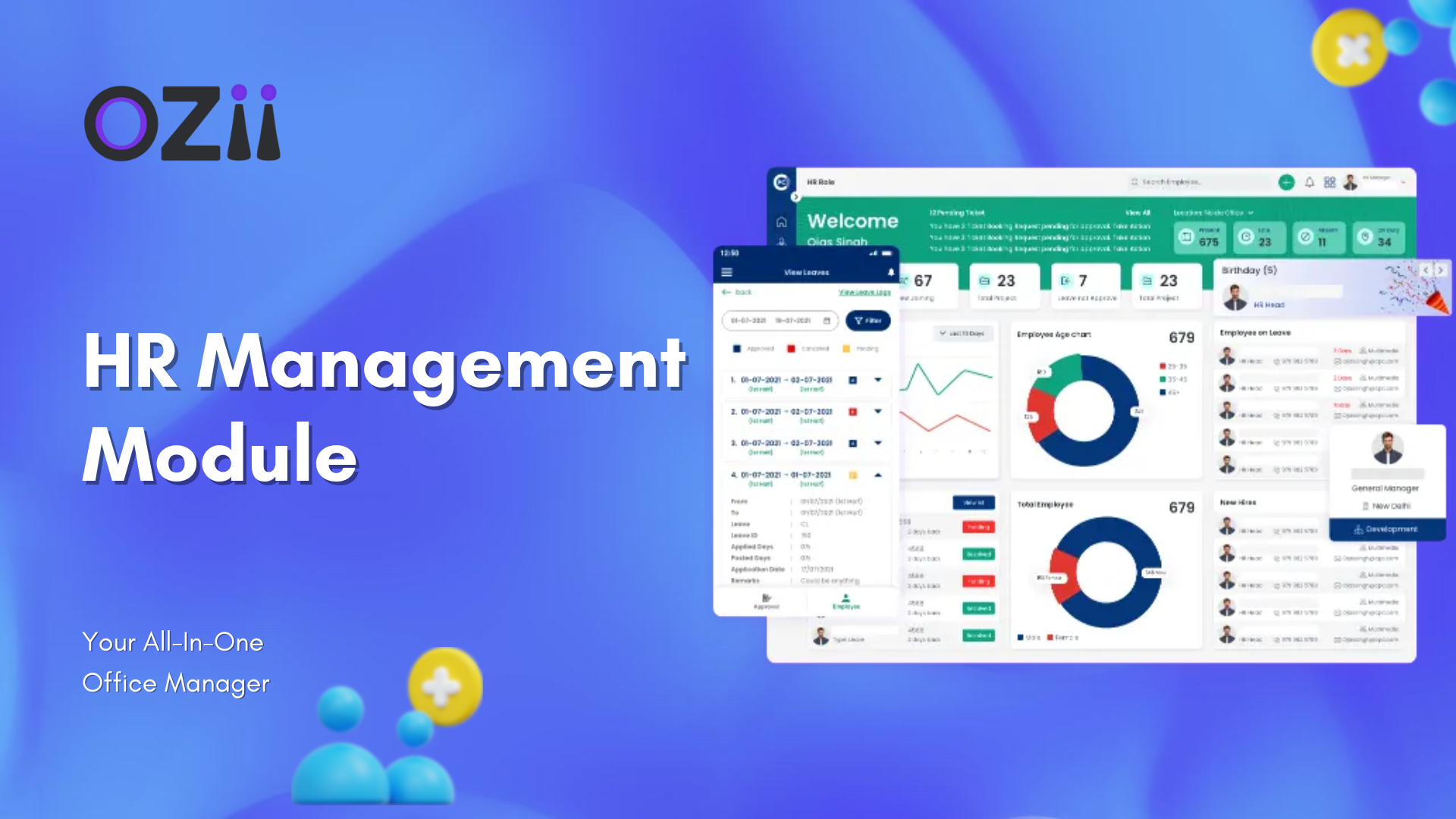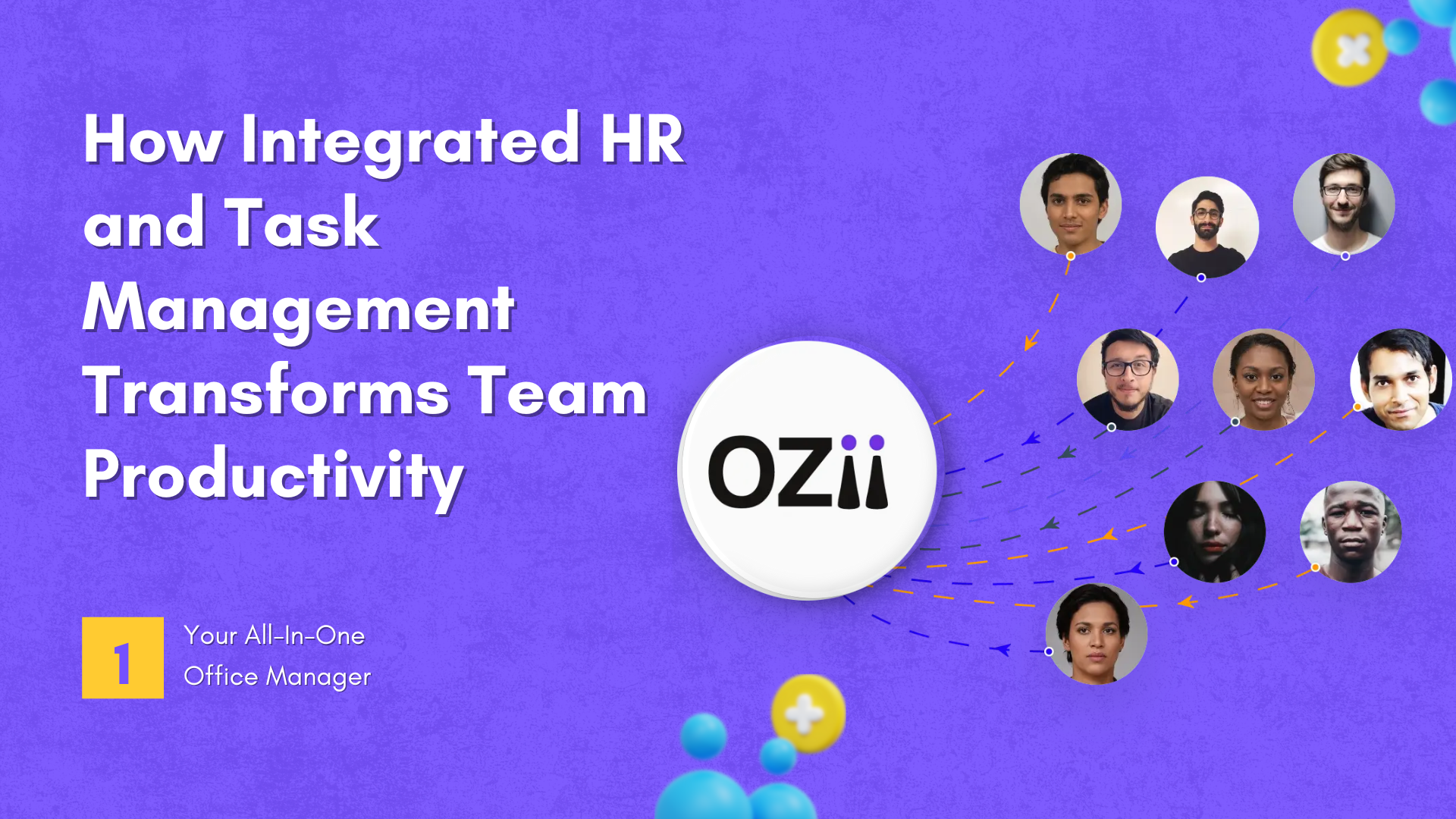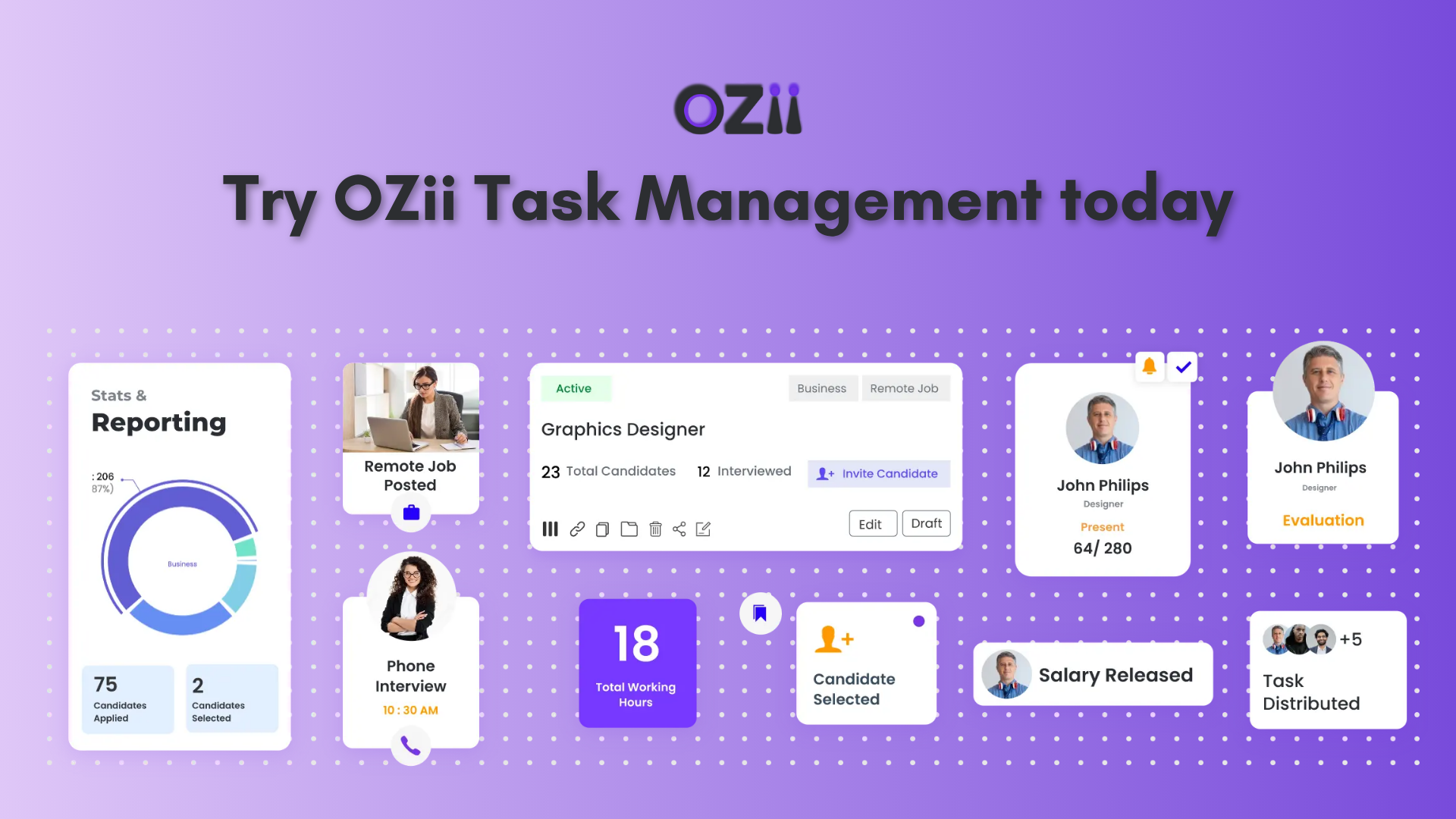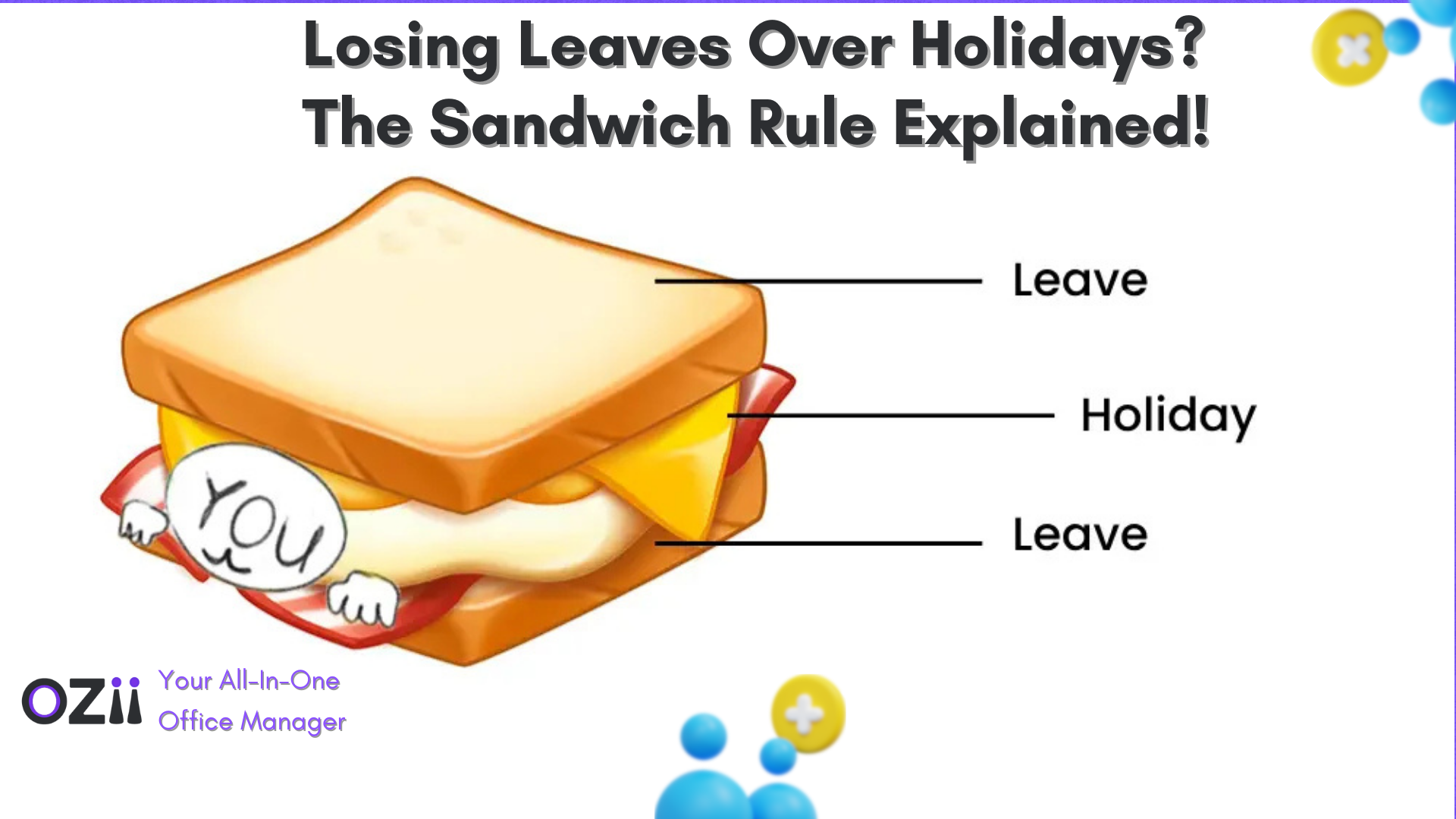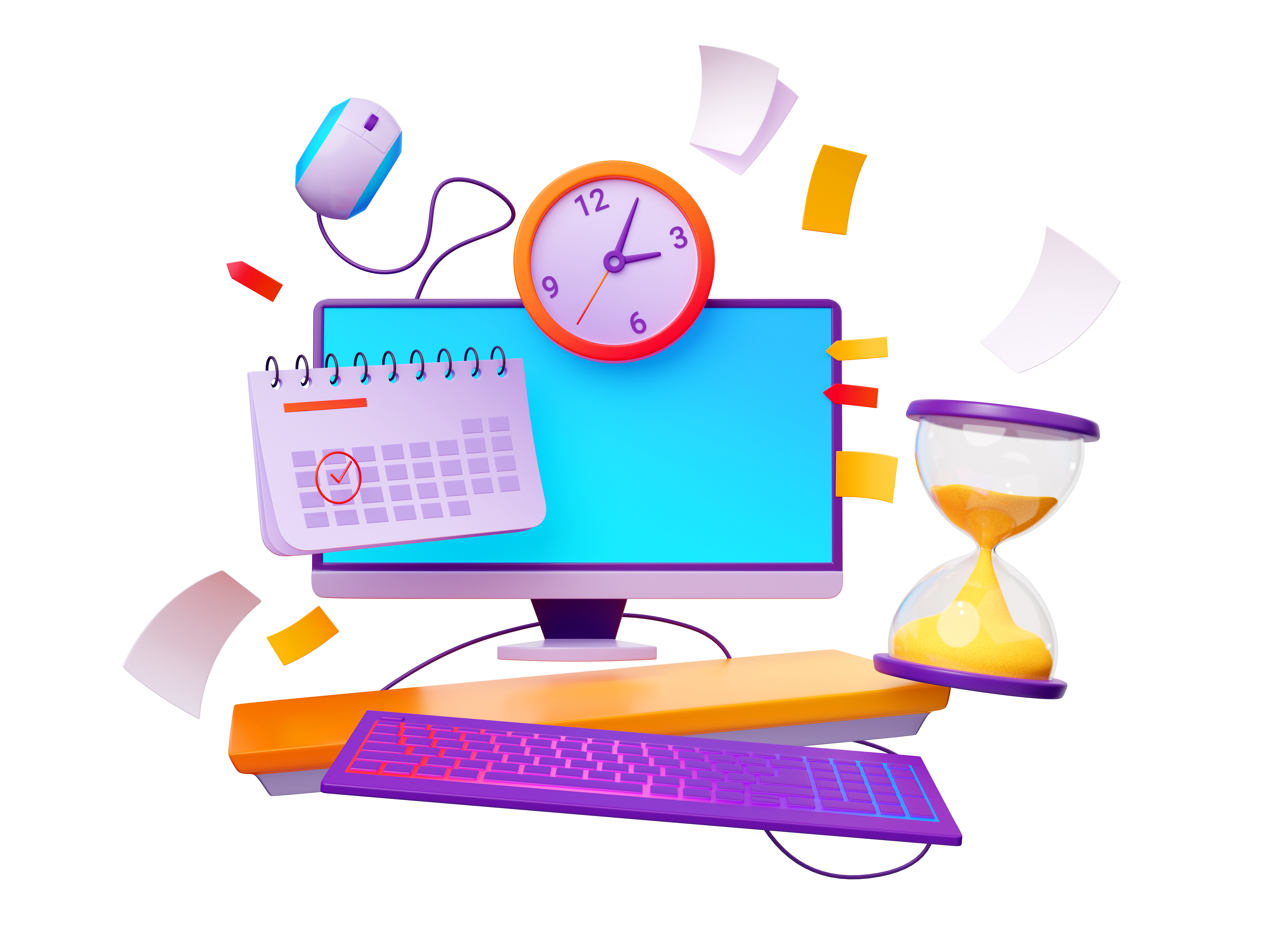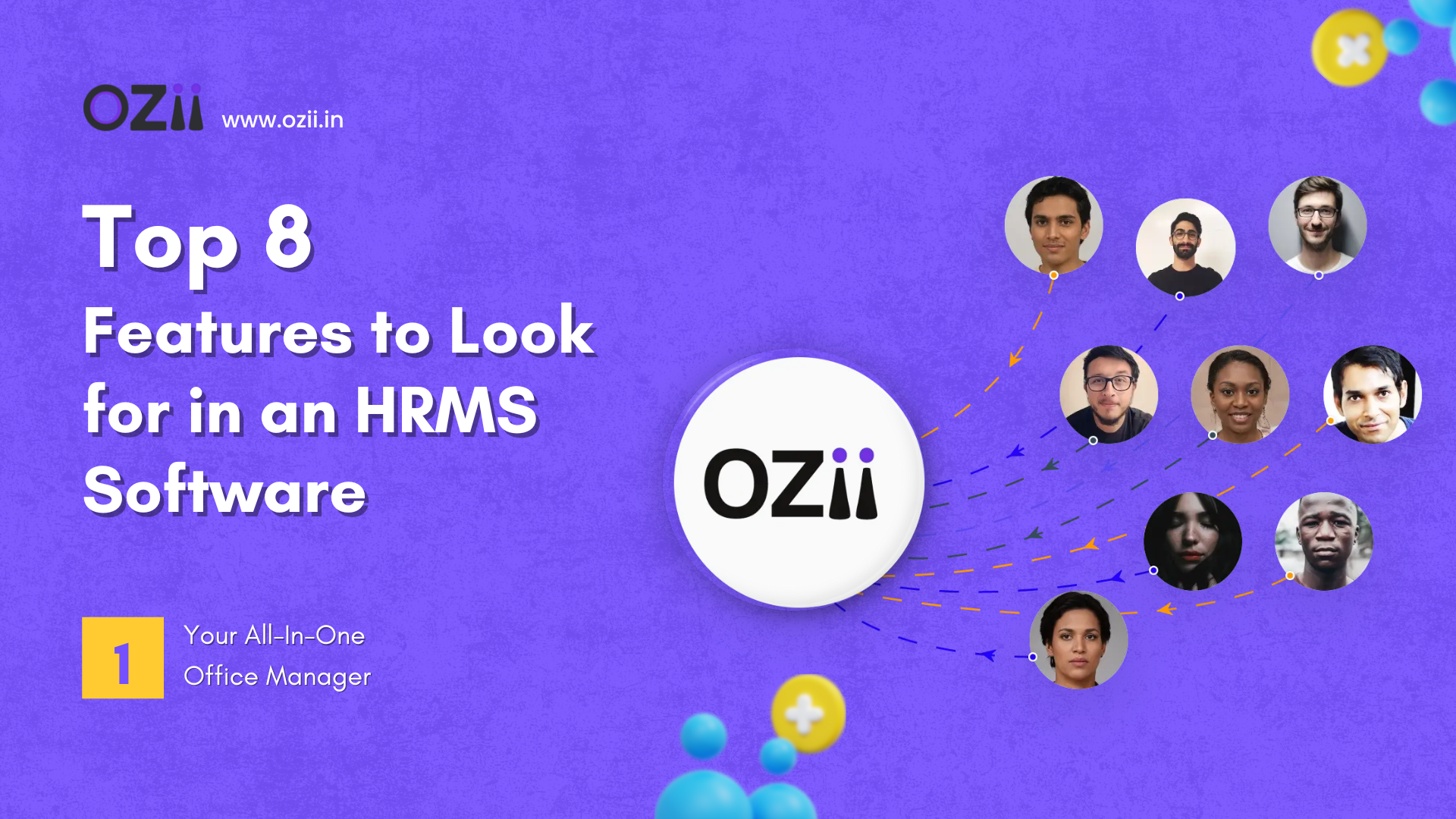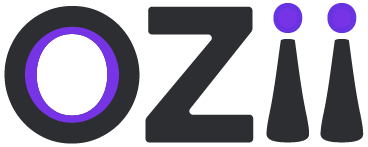
The Future of Workplace Efficiency: Why Businesses Choose

One login, one picture of work, one week to prove results. Give your team OZii and watch work move with less noise and more progress.
Work shifts fast across projects, people, and channels. You plan in one tool, track time in another, approve requests in a third, and share updates in chat. You flip between tabs and lose focus. Deadlines slip because owners and dates are unclear. You need one hub that shows what matters right now and who needs to move first.
What OZii brings in one place?
OZii pulls your daily work into a single view. You plan and track projects on boards and timelines. You assign clear roles on each task so decisions do not stall. You post jobs, review profiles, and move candidates through stages. You handle attendance, leave, and payroll in a clean flow. You start and end the day with dashboards that show progress and risks. A vendor module is coming next so you control supplier records and renewals in the same hub.
Why one hub wins?
When your work, people data, and updates live in one spot, you save time and avoid mixed signals. You set simple rules once and repeat them across teams. You make faster calls because you are not searching for details. You reduce back-and-forth and give each owner a clear next step. This is how you lift output without adding more meetings or manual reports.
A simple rollout that sticks
Start small and expand by plan, not by chance.
-
Week 1: Pick one team and one project. Create two boards: Delivery and Ops. Add every task you carry in your head. Assign an owner and a date to each card.
-
Week 2: Add hiring for one open role and set stages. Turn on daily updates in your Delivery board.
-
Week 3: Bring in attendance and leave. Add a monthly payroll close task with a checklist.
-
Week 4: Go live with dashboards. Review them twice a week with the team. Share three wins and three risks.
You will see faster decisions and cleaner handoffs by the end of the first week.
Boards that match how you work
Use four columns: To Do, In Progress, Review, Done. Keep one owner per card. Write short titles that start with a verb. Add dates and labels like Risk and Blocked. Keep your “In Progress” column small to protect focus. Ask each owner to move cards, not write long notes. Let the board become the single source of truth.
Checklist for stronger boards:
-
Every card has one owner and one date.
-
Labels have shared meanings across teams.
-
Cards in Review move within two days.
-
Overdue cards are reviewed each morning.
Timelines that reveal real risk
Open your timeline view every Monday. Look at the next two weeks. Confirm owners and dates. If one item slips, adjust linked tasks the same day. Break large work into smaller tasks to surface risk early. Short tasks move and finish. Long tasks hide problems. Bring the plan into the open so surprises fade.
Three moves that protect your dates:
-
Split tasks longer than five days.
-
Move one milestone forward when you gain ground.
-
Pull a risk card into this week and assign support.
Roles that remove guesswork
Add clear roles on each task so people move with confidence.
-
Responsible: who does the work.
-
Accountable: who makes the call.
-
Consulted: who gives input.
-
Informed: who gets updates.
Keep one Accountable per card. Two equals none. If ownership shifts, update the task on the spot. Review roles on your top five tasks each week. Fix overlaps. Fill gaps. You’ll stop rework before it starts.
Status at a glance, not a meeting
Open your status view in the morning. Scan overdue, due soon, and blocked. Ask owners to post one line in the task: next step and date. Move one card per owner from In Progress to Review before lunch. Move one card per owner from Review to Done by day’s end. This rhythm keeps momentum without long calls.
Standup steps that save time:
-
What shipped today?
-
What is blocked and why?
-
What is the next step and when?
Keep answers short. Let the board tell the rest.
People ops where work lives
You track attendance, leave, and pay in the same place you track tasks. No extra tabs. No missing records. Set clear rules for leave types, approval steps, and reminders. Use a shared calendar for holidays and shifts so managers plan load with facts. Add a month-end checklist for payroll and mark owners for each step.
People ops checklist:
-
Set leave types, holidays, and approval rules.
-
Add weekly reminders for pending requests.
-
Create a payroll close task with a due date and sub-steps.
-
Store policies in one pinned place for quick access.
Hiring without drag
Post a clear job with must-haves, plus a short scorecard. Define your stages: Applied, Screen, Assignment, Interview, Offer. Review new profiles daily. Move candidates by stage the same day you touch them. Keep notes short and searchable. Add targets for response times. Your pipeline stays warm. Strong talent does not go quiet.
Hiring moves that keep speed:
-
Two-line feedback after each call.
-
Same-day scheduling for next steps.
-
Weekly snapshot of top three candidates, risks, and actions.
-
Source tags so you know what channel works.
Dashboards that change behavior
Start and end your day with live numbers. Look at done vs planned. Watch cycle time from start to finish. Scan tasks stuck in Review. Check load by owner. When the picture is clear, you decide faster and spend time where it counts. Share the same view with your team so choices match the facts.
Four scores to watch:
-
Delivery: done vs planned this week.
-
Speed: average cycle time per team.
-
Quality: reopened items by project.
-
Load: tasks per owner and active blockers.
Make one decision per score each week. Move dates. Add support. Cut scope. You shape outcomes on purpose.
Vendor control on the horizon
Vendors affect your dates and costs. Prepare a clean list now: names, contacts, services, rates, renewal dates. Add simple scores for cost, quality, and response time. Set reminders 90 days before renewals. When the vendor module arrives, you will load this data and get reports that support quicker decisions.
Vendor prep steps:
-
One sheet for all suppliers and terms.
-
A score for each based on your rules.
-
Alerts set for renewals and key checks.
-
A folder with master files, clean and current.
Security, access, and trust
Grant access by role. Keep sensitive data limited to the people who need it. Use strong passwords and short session timeouts. Review access monthly. Turn off access on the same day a person leaves. Simple habits like these protect your data and build trust inside your team.
Mobile moves that keep work alive
Real life pulls you away from your desk. Use the mobile app to move cards, approve leave, and post updates. Turn on alerts for mentions and tasks due today. Record a voice note when you need speed. Short actions during a commute or a quick break can clear blockers and keep work on track.
Mobile habits that help:
-
Open your status view at lunch.
-
Approve simple requests in the moment.
-
Add a next step to your top task before your next meeting.
Bring your team along
Change sticks when people see wins fast. Appoint two champions. They answer quick questions and keep the rules the same across boards. Share a one-page guide with your column names, labels, and rules for owners and dates. Celebrate a small win each Friday. Show a before-and-after on one project. Momentum grows when people see the value in their day.
Use cases by team
Give each team a simple plan they can run today.
-
HR: Onboarding board with a checklist for day 1, week 1, month 1. Exit board with tasks for handover, access removal, and payroll close. A policy hub with pinned links.
-
IT: Ticket board by priority. Label vendor holds. Change notes in task comments. Weekly scan of repeated issues.
-
Operations: Recurring tasks for audits and stock checks. Photos attached to each record. Weekly risk summary sent from the dashboard.
-
Marketing: Campaign board by channel. Drafts attached to tasks. Review and approval in the Review column.
-
Product: Roadmap by milestone. Timelines tied to releases. Short tasks to keep flow. Cycle time review on Fridays.
-
Sales: Handoff tasks for new deals. Follow-ups on shared boards. Short notes after calls so next steps are clear.
Each plan fits in the same hub so teams share the same language and steps.
Avoid these common traps
Teams slow down when rules drift. Keep your guardrails tight.
-
No task without an owner or date.
-
No card stuck in Review longer than two days.
-
Labels used the same way by every team.
-
One board per project or team, not ten boards for the same work.
-
Weekly review of overdue work with clear decisions.
This removes friction and helps people stay in flow.
Lead with short, clear communication
Long notes hide the signal. Ask for one-line updates that say the next step and the date. Use verbs. Cut filler. Reinforce this daily. Write your reports in short blocks. Share numbers first, then actions. When you write this way, your team mirrors the style and your reviews move faster.
Short writing guide:
-
Use plain words and short lines.
-
Put the action first, then the why.
-
Avoid jargon.
-
Trim anything you do not need.
Data that teams trust
Pick the numbers that matter and track them the same way every week. Share the same dashboard with every team. Give each owner one number they watch. Ask for one move based on their number every week. This builds a rhythm that reduces drift and guesswork. Your plans turn into shipped work more often.
A week in the life with OZii
-
Monday: Review the timeline for two weeks out, adjust dates, and tag risks.
-
Tuesday: Move one task per owner to Review and clear blocks by noon.
-
Wednesday: Run a short hiring review, schedule next steps, and post a snapshot.
-
Thursday: Check cycle time and load by owner, shift one task to balance the team.
-
Friday: Look at done vs planned, share wins and risks, and post next week’s first move.
Repeat this rhythm. Small steps, same rules, steady gains.
Your first day plan
-
Create your Delivery and Ops boards with four columns.
-
Add your top twenty tasks and assign owners and dates.
-
Turn on reminders for due-today and mentions.
-
Add three labels: Risk, Blocked, Urgent.
-
Post one open role and set the pipeline stages.
-
Build a dashboard with done vs planned, cycle time, and load.
You now have a clear view, clear owners, and a simple way to move.
FAQs
Q1- How fast will you see results?
You will feel the difference in a week. Daily updates move to boards. Meetings get shorter. Decisions land faster. Dates start to hold.
Q2- What if your team resists new tools?
Start with one project. Show the board at the start of each meeting. Keep rules simple. Celebrate a small win each Friday. People follow proof.
Q3- Do you need to move every process on day one?
No. Start with projects, then hiring, then people ops. Add more when the first parts run smooth.
Q4- How do you handle sensitive data?
Set access by role. Review it monthly. Remove access when people leave. Keep logs and stick to short sessions.
Q5- What if work lives in other tools today?
Pick the current project with the most pain. Move it first. Keep the old tool read-only for a short time. Redirect updates to the new board. Close the loop in two weeks.
Conclusion
Give your team a single source of truth and a simple set of rules. Open OZii, build two boards, add owners and dates, and switch your daily updates to the board. Post one open role and set clear stages. Turn on your dashboards and review them twice a week. You will see cleaner handoffs, fewer surprises, and steady delivery in your first seven days.
HRMS

